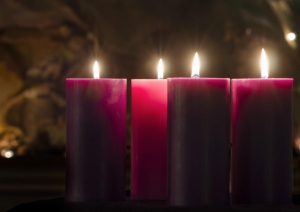 Advent is the practice of celebrating days in December leading up to Christmas. It’s an old tradition followed by fasting and Advent calendars.
Advent is the practice of celebrating days in December leading up to Christmas. It’s an old tradition followed by fasting and Advent calendars.
For Catholics, Advent is a season of candlelight, expectation, and reflection. But how did the tradition come into being? What historical importance does it hold? And how did it develop into the modern practice of Advent we know today?
Here’s all you need to know about the history of Advent.
What does Advent mean?
Advent means “arrival” or “coming.” In 380, after Theodosius (the Roman Emperor) declared Christianity as the legal religion of the Empire, a 2nd season was needed.
In his era, only 15% of the Empire was practicing Christian. However, after 380, the majority of the citizens sought to become Christian. Therefore, it was impossible to cater to all those preparing for baptism in one season.
Does Advent depict the start of a Christmas season?
The advent period starts before the Christmas season. The Advent starts on the Sunday nearest November 30th, which is also the feast day of St. Andrew and lasts till four Sundays. Since the day it starts changes every year, the length of each Advent period also differs.
Origins
No one knows for sure when the practice of preparing for Christmas began. But what we do know is that it is at least as old as 480 AD. On the other hand, the oldest evidence of the tradition of Advent is from the 6th century AD.
The Council of Tours of 567 introduced this tradition. The novelty was to have monks fast each December, counting down until Christmas. But even then, it is near impossible to say with confidence that we know where the tradition of Advent began.
The Nativity Fast
Alon with the time of Advent, there is also the Nativity Fast or the Fast of December, a time of fasting before Christmas.
Saint Gregory of Tours believes in celebrating Advent bean somewhere in the 5th century AD.
It all started with Bishop Perpetuus. He declared that starting from St. Martin’s Day on the 11th of November each year until Christmas, a fast would be observed a week thrice. This explains why the time of Advent is also referred to as the Lent of St. Martin.
However, this idea of fasting before Christmas was mainly practiced within the diocese of Tours. In the 13th century, fasting during Advent was not a common practice, though fasting, in general, was common.
It wasn’t until the 6th century AD that the Council of Macon began practicing fasting as well. They observed a fast thrice a week following St. Martin’s Day until Christmas.
And it wasn’t long before all of France would adopt the practice. Some worshippers would even fast every day following the feast of St. Martin.
Following that, in the late 16th century AD, the homilies of Gregory the Great observed 4 weeks of Advent. However, there is evidence to suggest that they did not fast. Nevertheless, certain writings from the 19th century AD claim that they observed the fast.
Since then, the liturgy of Advent has remained the same for the most part, except for the changes by the Second Vatican Council. This Council decided to differentiate Lent from Advent. It instead established Advent as a season of preparation for the Second Coming of Christ.
History of Advent Wreaths
Advent wreaths have a deep connection with the month of Advent. These wreaths originate from the old folk traditions that come from northern Europe. People light up candles on circular bundles of evergreen in the cold days of winter.
Sometime later, the practice was adopted by the Christians in Eastern Europe. And as the 16th century approached, the modern Advent wreath was developed. These wreaths consisted of 4 candles, of which 3 were purple, and 1 was the color of a rose.
The color purple was extremely rare at the time and signified royalty. That’s why most of the Roman Catholic Church wear the color purple. Advent is a crucial time for priests to purple vestments. If you want to buy authentic vestments for Advent this year, head on over to Vestment.
History of Advent Calendars
Advent calendars also mark the beginning of Advent. They look like regular calendars but have 24 small compartments or doors that must open one by one from December 1 to 24. Behind each door is traditionally a picture.
Although this Christian tradition doesn’t have any religious context, many still practice it. And it has its beginnings in the late 1800s in Germany. Initially, the images behind the door were from the Hebrew Bible. But over time, the pictures customize with different graphics.
What religions celebrate Advent
Advent is considered one of the main seasons celebrated in churches in the Western tradition: Anglicans, Roman Catholics, Lutherans, Episcopalians, and many other Protestant churches celebrate this period with special adherence.
Conclusion
Advent is the time of celebrating the days leading up to Christmas. It’s the time to open up your Advent calendar and fast for the coming days. Hopefully, you now know the historical importance of Advent and how it has developed as a tradition from the early 5th century AD.
Shift Frequency © 2022 – The History of The Advent
